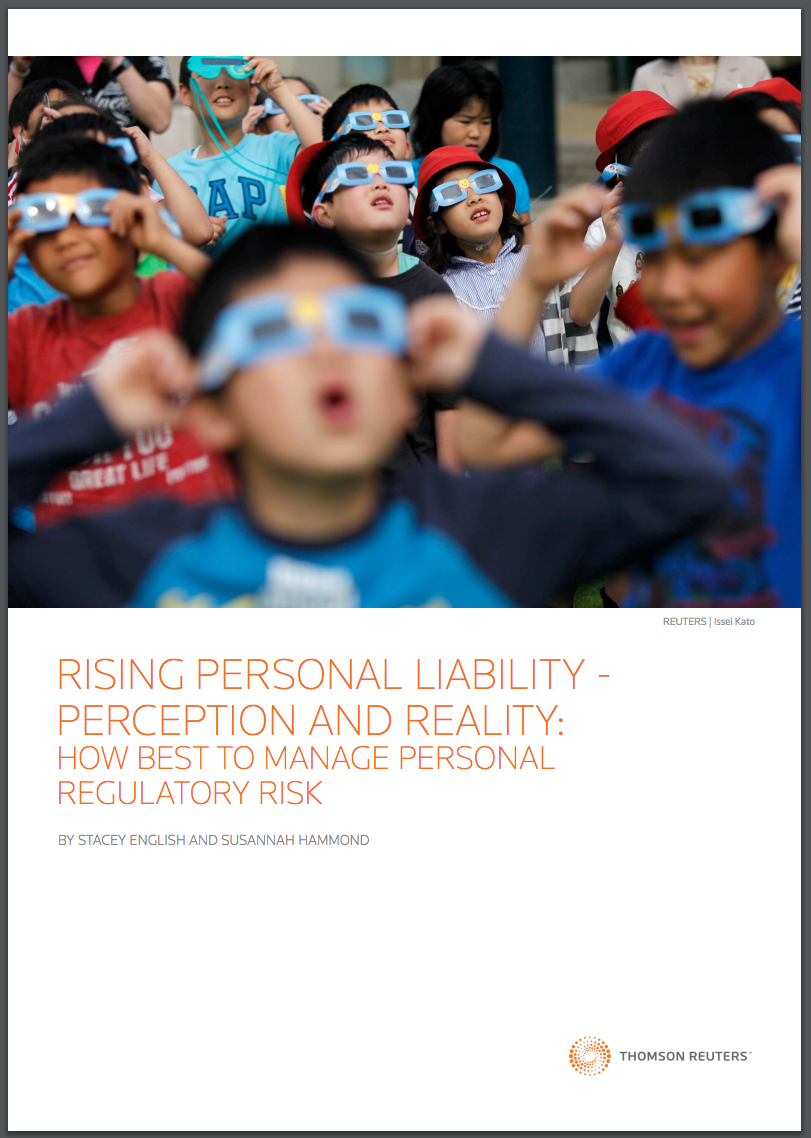This article was republished with permission from Tom Fox’s FCPA Compliance and Ethics Blog.
Elliot Gant died earlier this month. His name may not be familiar to you, but his popularization of a product is: the button down shirt. According to his obituary in the New York Times (NYT), in the late 1940s, Elliot and his brother Martin “popularized the button-down shirt as a de rigueur garment for Ivy League and Madison Avenue men. They were so taken with their success, in fact, that not long after their company was rebranded Gant in 1949, the brothers adopted the label as their surname.” They became so associated with the shirt style and its moniker that they shortened their last name from Gantmacher to simply Gant.
The brothers did not “invent the button-down; the venerable Brooks Brothers haberdashery had borrowed the style from British polo players decades earlier, and it had been romanticized here and there in popular culture.” In other words, they took a very good idea and popularized it in another way that made the product ubiquitous right up until this day. As a lawyer, I still own my fair share of button down Oxford shirts.
The Gants’ thinking informs today’s post. I recently read another article in the NYT Corner Office column by Adam Bryant, entitled “The Truth May Hurt, but It Also Heals,” in which he profiled Aaron Bell, the Chief Executive Officer (CEO) of AdRoll, an online advertising placement firm. Bell presented a different manner to think through the expungement of issues from a business — one that bears consideration for the compliance professional.
Bell likened the corporate corpus to that of a “human body, which builds up toxins over time. Every company has problems and issues that build up, and you need to find outlets for those things.” He has considered “how you come up with different practices in the company that are a kind of cleanse. So we do a weekly all-hands meeting, and it’s a weekly flush to get the toxins out.”
He does this by putting his team through meetings, allowing them to pose questions beforehand and then vote for their favorite questions to answer. He believes this is a way to get his team to tell the truth about issues that concern them. He stated, “I also encourage people to post their fears, their uncertainties and doubts. And there’s a guarantee that any question that is asked will get answered or addressed by me, unless they are personal in nature about someone in particular. The alternative, if you don’t do that, is that you have people behind closed doors chatting about the company, gossiping, saying negative things. If you address everything, people feel much more trust. They feel like they know what’s happening. And they’re going to make better decisions because they know what’s going on.”
While this may seem a bit too “Kumbaya” for the average corporation, I think the larger point is nevertheless well taken. If you give employees a way to bring up issues and not be chastised for doing so, they will. This is because most employees want their company to not only do well, but to run in an ethical way. Of course this is the basic concept behind any anonymous reporting system, but the key insight from Bell is that employee concerns are dealt with in the light of day and with transparency.
Another technique that Bell uses is to have employees at the six-month mark “write a letter to yourself as a new employee about what you wish you had known and had been taught. Then we compile those, and new hires get a 100-page book of these letters. It encourages people to really help each other out.” Now imagine if that exercise included how the company strove to do business ethically and in compliance. This could be a powerful tool to start the underlying conversation about a company’s expectations at the beginning of the employment relationship.
Another way to approach compliance in a company is demonstrated in Bell’s views on hiring. These views are informed by his desire; he said, “it’s really important to find people who are interested in building something great, rather than people who are interested in joining something great. So having people who care is a big thing.” He wants employees who will be a part of the solution, not part of a problem. This is certainly relevant to the Chief Compliance Officer (CCO) and compliance professional.
Bell’s remarks point toward the clear import that doing business ethically and in compliance is an ongoing conversation. It is not only about setting expectations in the hiring process and then reinforcing those expectations through continued compliance messaging, pay and other incentives. You must work to make sure that employees can and will raise their hands if they see something that does not make sense.
When was the last time you looked at how many contract employees you had in positions with an oversight role in some control of your compliance program? What about employees in accounts payable — have been trained to look for certain terms in invoices that might raise red flags if submitted by third-party representatives? If they are contract employees or hired through a temporary employment agency, they may have never received training.
What about employees who may be reviewing employee expense reports? If those expense reports are for overseas travel, have those employees been trained on whether recipients of gifts, travel or entertainment have been identified so that the compliance function could determine if foreign officials or employees of state-owned enterprises were the recipients? Have the reviewing employees even been alerted to what the threshold is over which the CCO or compliance function must pre-approve?
These basic controls can only work if they are effective and enforced. Bell’s larger point is that you must let employees raise concerns so that they can be effectively dealt with, and this is something that every CCO should consider for his or her company.
This publication contains general information only and is based on the experiences and research of the author. The author is not, by means of this publication, rendering business advice, legal advice or other professional advice or services. This publication is not a substitute for such legal advice or services, nor should it be used as a basis for any decision or action that may affect your business. Before making any decision or taking any action that may affect your business, you should consult a qualified legal advisor. The author, his affiliates and related entities shall not be responsible for any loss sustained by any person or entity that relies on this publication. The author gives his permission to link, post, distribute or reference this article for any lawful purpose, provided attribution is made to the author. The author can be reached at tfox@tfoxlaw.com.



 Thomas Fox has practiced law in Houston for 25 years. He is now assisting companies with FCPA compliance, risk management and international transactions.
He was most recently the General Counsel at Drilling Controls, Inc., a worldwide oilfield manufacturing and service company. He was previously Division Counsel with Halliburton Energy Services, Inc. where he supported Halliburton’s software division and its downhole division, which included the logging, directional drilling and drill bit business units.
Tom attended undergraduate school at the University of Texas, graduate school at Michigan State University and law school at the University of Michigan.
Tom writes and speaks nationally and internationally on a wide variety of topics, ranging from FCPA compliance, indemnities and other forms of risk management for a worldwide energy practice, tax issues faced by multi-national US companies, insurance coverage issues and protection of trade secrets.
Thomas Fox can be contacted via email at tfox@tfoxlaw.com or through his website
Thomas Fox has practiced law in Houston for 25 years. He is now assisting companies with FCPA compliance, risk management and international transactions.
He was most recently the General Counsel at Drilling Controls, Inc., a worldwide oilfield manufacturing and service company. He was previously Division Counsel with Halliburton Energy Services, Inc. where he supported Halliburton’s software division and its downhole division, which included the logging, directional drilling and drill bit business units.
Tom attended undergraduate school at the University of Texas, graduate school at Michigan State University and law school at the University of Michigan.
Tom writes and speaks nationally and internationally on a wide variety of topics, ranging from FCPA compliance, indemnities and other forms of risk management for a worldwide energy practice, tax issues faced by multi-national US companies, insurance coverage issues and protection of trade secrets.
Thomas Fox can be contacted via email at tfox@tfoxlaw.com or through his website 






